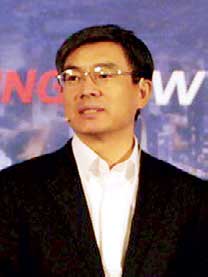23 Nov 2017 - {{hitsCtrl.values.hits}}
Huawei is participating in the Smart City Expo World Congress 2017 (SCEWC) in Barcelona under the theme of ‘Leading New ICT, Creating a Smart City Nervous System,” highlighting how a Smart City can be like a living organism that works seamlessly to continuously learn and enhance the
city’s services.
Together with its global partners, Huawei is demonstrating joint ICT solutions to connect the digital and physical worlds across city administration, public services, and industrial economies. Using new ICT including cloud computing, Big Data, Internet of Things (IoT), and Artificial Intelligence (AI), these solutions drive unified coordination, cross-sector collaboration, and intelligent analysis for effective management of city services

Alongside the SCEWC, Huawei hosted the Global Smart City Summit, where representatives from the European Union, international standards organizations, world-renowned consultancies, relevant research institutions and leading Smart Cities shared their insights and experiences in driving Smart City development with over 400 city administrators from around the world.
Becoming a Smart City involves the digital transformation of a city to address challenges in the physical world. This demands data-driven systems that combine management and IoT data to help authorities manage the city and enable the physical and digital worlds to be integrated. Smart City development requires a fundamental change to city administration and for the development to flourish it needs to be a priority for the government. In addition, there must be a strong and capable Smart City project team, long-term and stable investment, and city leaders need to partner with a leading digital provider that can facilitate the transformation. Yan Lida, President of Huawei Enterprise Business Group, said: “A Smart City is like a living organism, which is powered by a nervous system. This Smart City nervous system comprises a ‘brain’ (the control center) and ‘peripheral nerves’ [the network and sensors], gathering real-time information about the status of the city, transmitting the data, enabling the ‘brain’ to analyze and make informed decisions, delivering feedback commands, and ultimately carrying out intelligent actions.
This creates a seamless link between the physical and digital worlds. Leveraging leading new ICT such as cloud computing, IoT and AI, Huawei is committed to creating a strong nervous system that powers Smart Cities. With our innovations and investment in various technologies, we develop an open platform for Smart Cities, which is compatible with various devices and supports a wide range of applications. We aim to be the rich soil that supports the robust and sustainable development of Smart Cities. Huawei is one of the few ICT solution providers in the industry that can offer end-to-end cloud-pipe-device solutions, leading the way to connecting the physical and digital worlds. We will continue to work together with our ecosystem of partners to create top-level designs addressing city administrators’ needs and achieving the ultimate goals of a Smart City to enable good governance, promote industry development and deliver benefits for the people
During the Global Smart City Summit, Huawei released the Intelligent Operation Center (IOC), a solution that functions as the ‘brain’ of the Smart City, connecting the digital and physical worlds.
The underlying infrastructure of the IOC comprises distributed cloud data centers and ubiquitous city networks that collect, integrate and share city information, enabling real-time visibility of the city. The IOC uses an Integrated Communications Platform (ICP) that enables intelligent collaboration across city functions and emergency dispatch of all services.
By using big data, machine learning and AI technologies, the IOC delivers valuable insights to facilitate city planning and management of vital services such as transportation and security.
Huawei also provides wired and wireless broadband, IoT platforms, and LiteOS – a secure, lightweight and intelligent operating system, that serve as the peripheral nervous system, collecting data to assist the brain in making decisions, which bring about changes in the physical world.
For example, sensors for temperature, humidity and brightness in greenhouses provide real-time environmental data for the city operations control center, enabling the center to inform respective control devices to carry out adjustments when the thresholds are reached, to meet the specific environmental needs of the crops in each greenhouse.
26 Dec 2024 4 hours ago
26 Dec 2024 5 hours ago
26 Dec 2024 6 hours ago
26 Dec 2024 7 hours ago
26 Dec 2024 8 hours ago